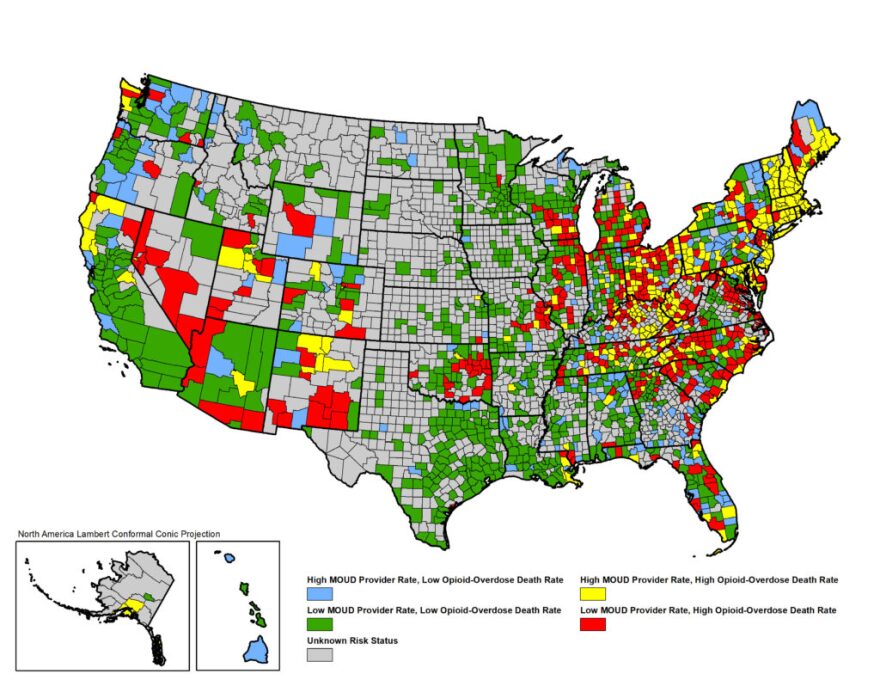As Michigan joins the nation in seeking solutions to the opioid crisis, researchers at the University of Michigan have come up with an important tool for policymakers and leaders.
It's a study that identifies counties considered "high-risk" in the opioid epidemic. The study says nearly 30% of Michigan counties fall into that category.
Rebecca Haffajee, an assistant professor of health management and policy at the University of Michigan School of Public Health, co-authored the study.
To support more reporting like this, consider giving to Michigan Radio today.
It categorizes counties as "high risk" if they have both high opioid overdose mortality rates, and low capacity to treat opioid addiction with medications like methadone and buprenorphine.
“These medications and treatments for opioid addiction can vastly reduce mortality by 40 to 50%,” Haffajee said. “So we wanted to come up with a combined measure of what counties had both risk factors.”
Twenty-four of Michigan's 83 counties were categorized as high-risk, one of the highest rates in the country.
“What that tells us is, despite having high overdose mortality here — and we’ve been among the top 15 states in the country for many years now — that we haven’t caught up in terms of having enough treatment providers to try to mitigate those risks,” said Haffajee.
Most of those high risk counties are in the Lower Peninsula, and in metropolitan regions. That second finding was surprising, said Haffajee. While rural counties in Michigan have fewer treatment options — 71% had zero publicly listed providers as of 2017 — metropolitan counties had much higher mortality rates. Haffajee says that's due to a spike in fentanyl and synthetic availability in those areas.
Michigan’s high-risk counties listed in alphabetical order:
- Berrien
- Calhoun
- Clare
- Crawford
- Eaton
- Genesee
- Gladwin
- Huron
- Ingham
- Isabella
- Kent
- Lenawee
- Livingston
- Macomb
- Manistee
- Mason
- Monroe
- Montcalm
- Muskegon
- Roscommon
- St. Clair
- Shiawassee
- Van Buren
- Wayne




